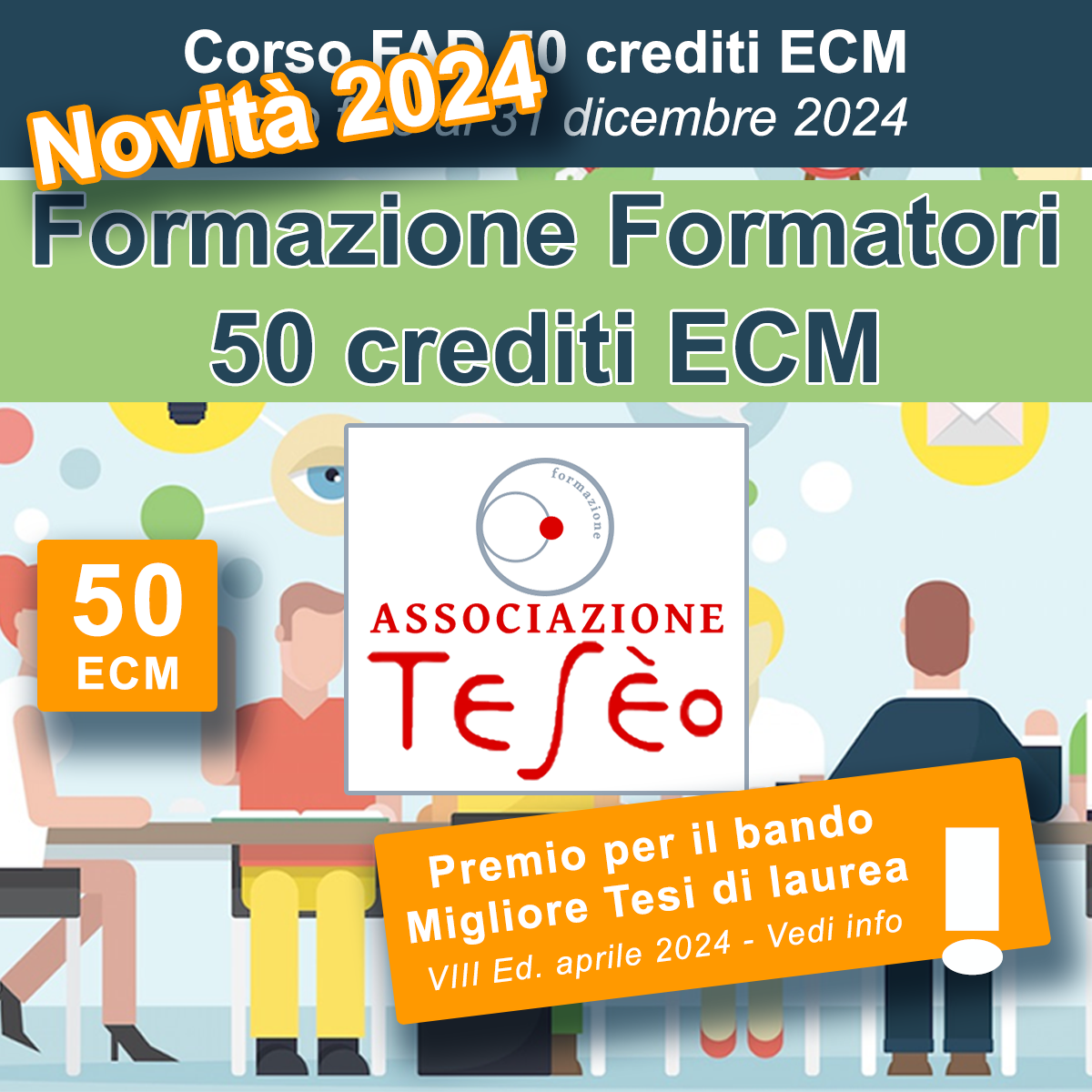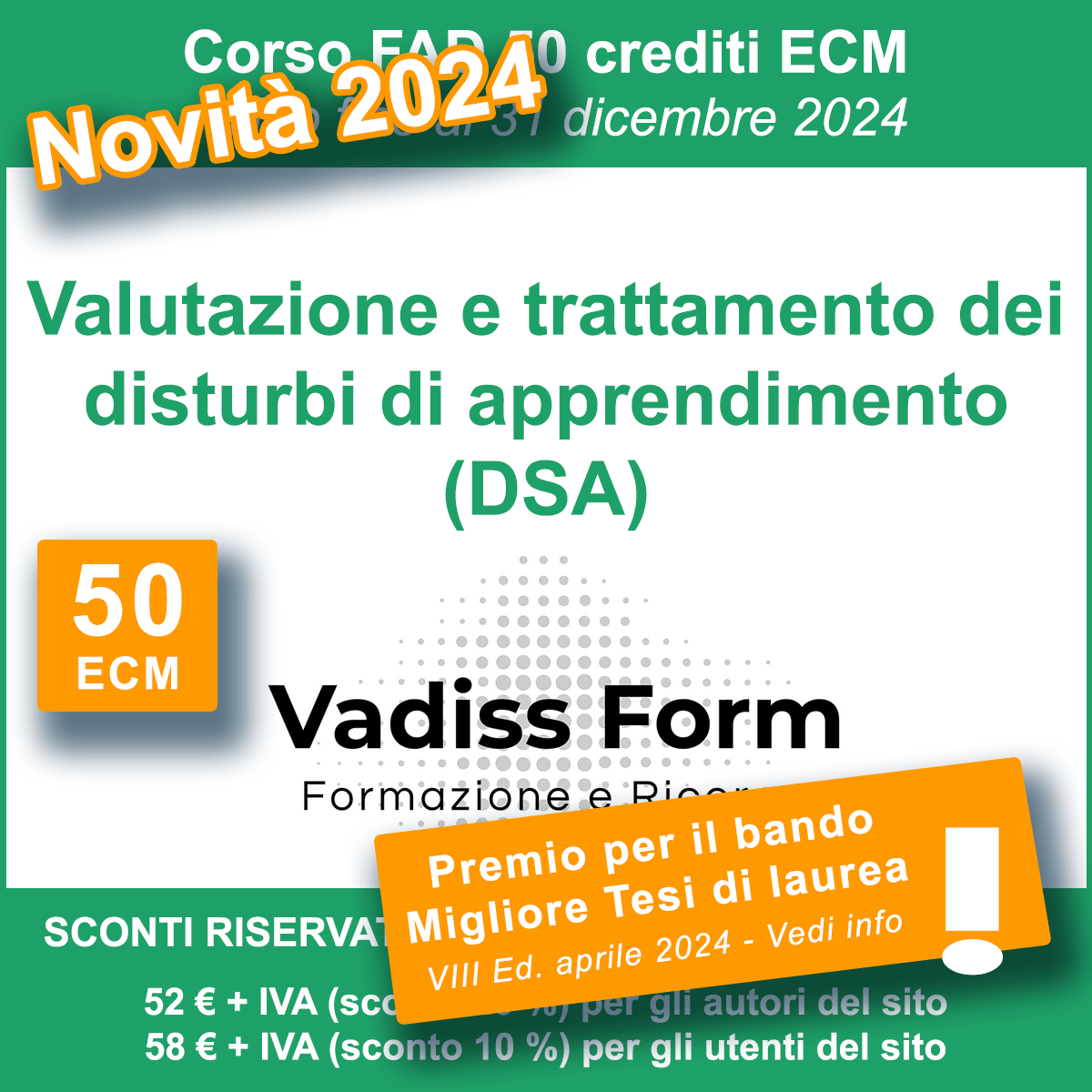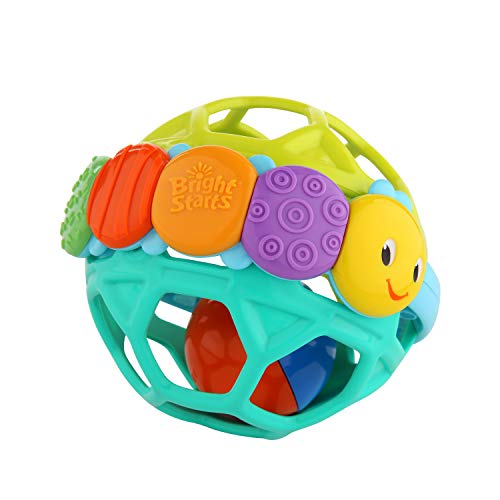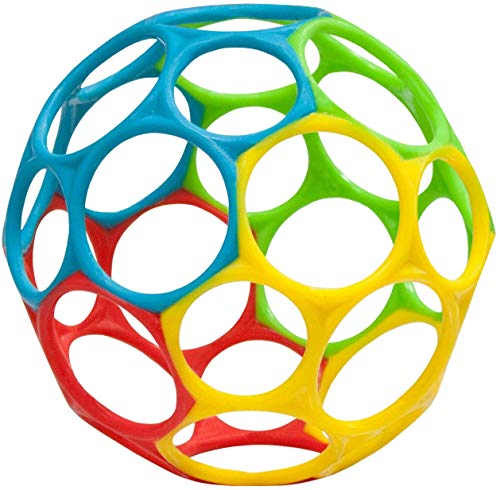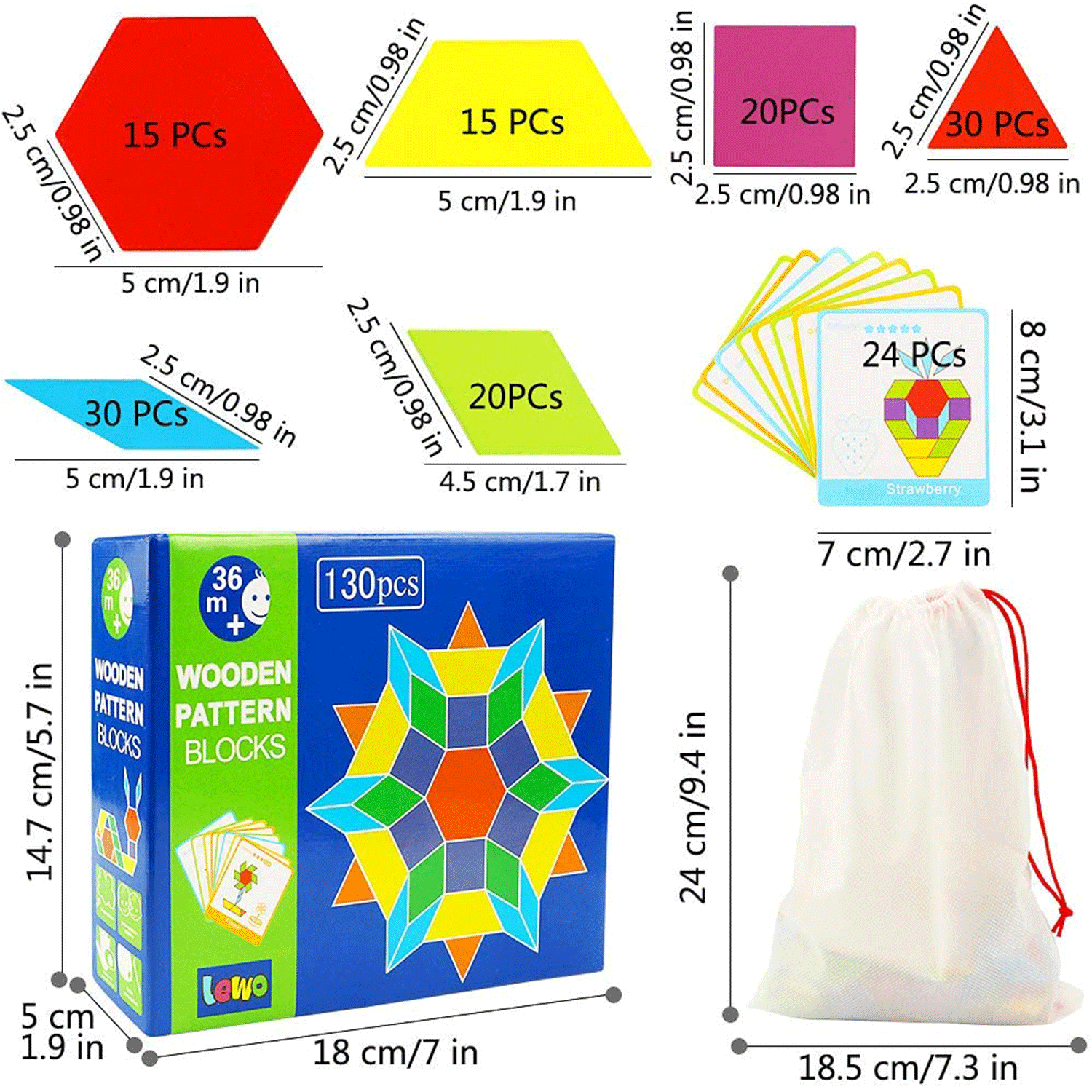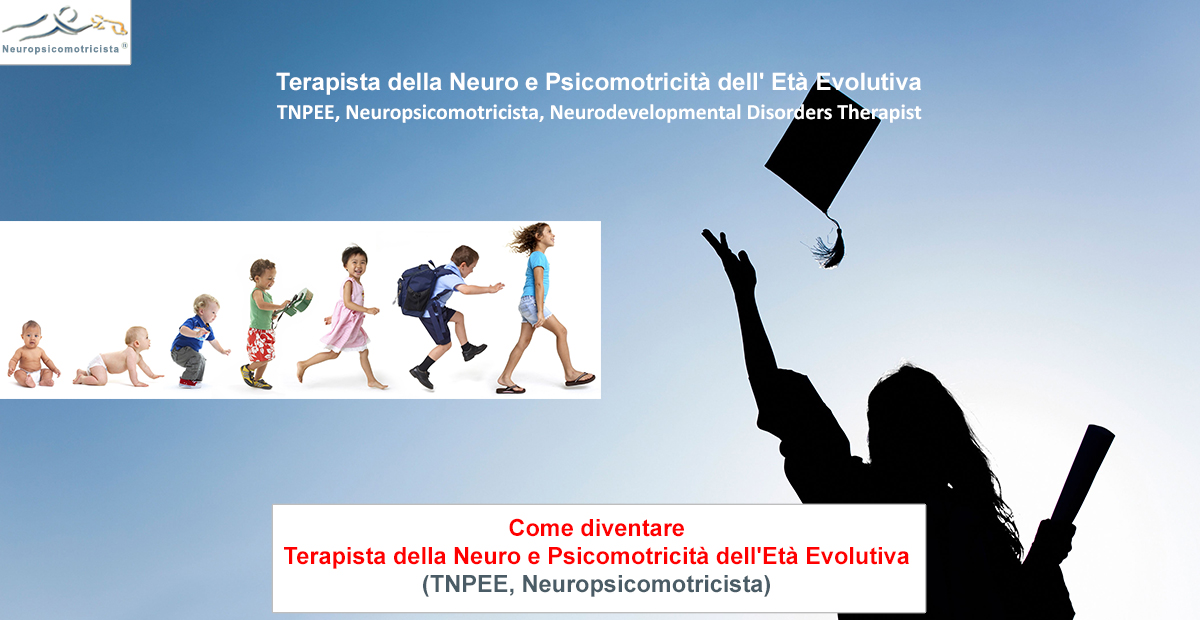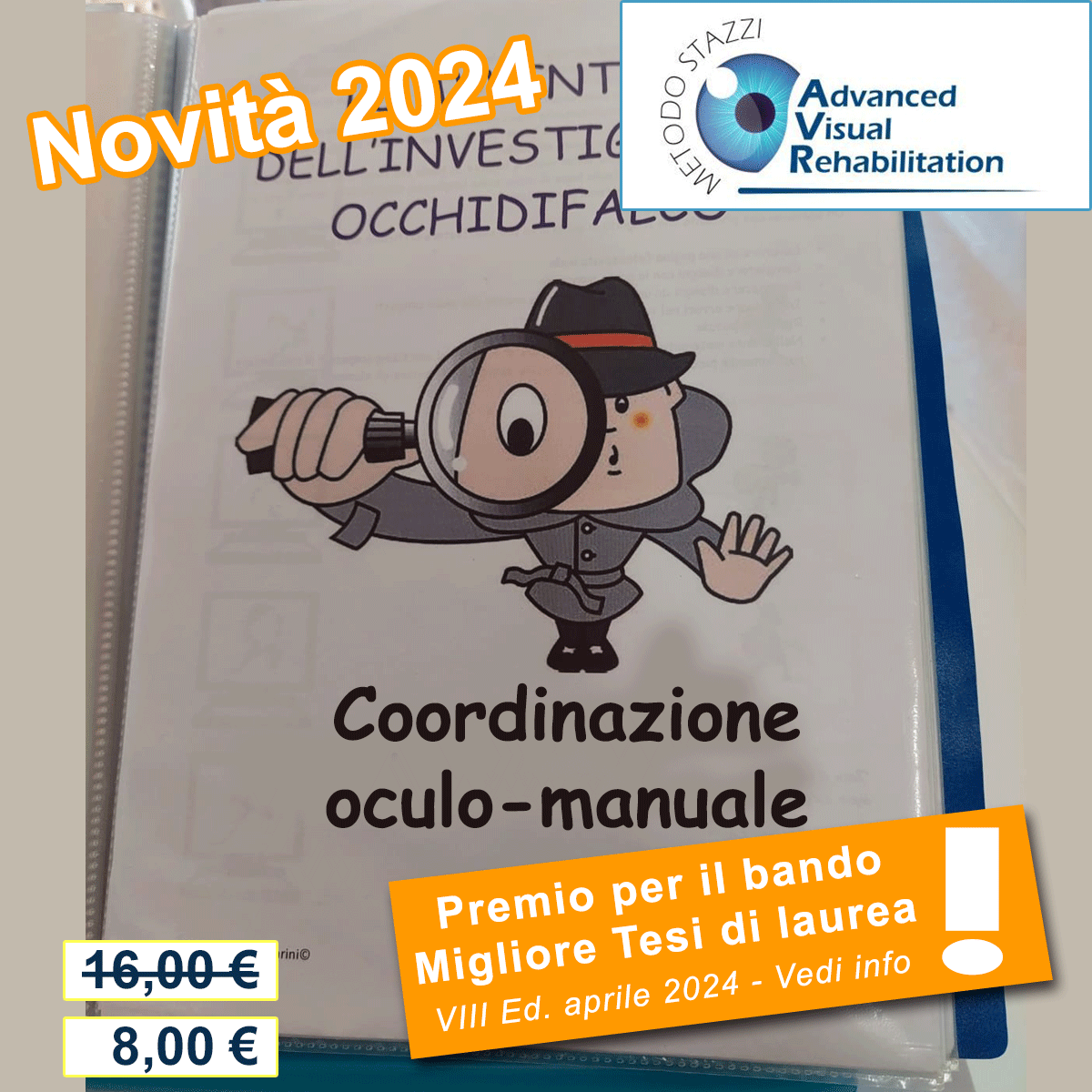BIBLIOGRAFIA - Approccio psicomotorio integrato: possibili applicazioni in un caso di medulloblastoma
AA.VV. (2002). Manuale di psiconcologia. Milano: Masson.
Damasio, A.R. (2009). L’errore di Cartesio. Emozioni Ragione e Cervello Umano .
Milano: Adelphi.
Bergès, J., & Bounes, M.(1974). La relaxation thérapeutique chez l’enfant. Parigi :
Masson.
Boscaini, F. (2007). Le emozioni nella relazione psicomotoria. Parigi: Relazione
presentata alla XXVI Università Estiva.
Boscaini, F., & Gobbi, G. (2001). In P.G. Malesani (Ed). Il Corpo Tonico Emozionale,
la conoscenza come desiderio. Verona: Edizioni Res.
Boscaini, F., Gobbi G., Malesani P.G., & Mazzara, G. (1992). Iter psicomotorio.
Verona: Libreria Universitaria Editrice.
Boscaini, F. (1987). Approccio psicomotorio e intervento educativo-rieducativo.
Verona: Libreria Universitaria Editrice.
Boscaini, F. (2007). Lo sviluppo psicomotorio. Verona: C.I.S.E.R.P.P
Boscaini, F. (2008). L’esame psicomotorio. Verona: C.I.S.E.R.P.P
Bottaccioli, F.(2003). Psiconeuroimmunoendocrinologia: la grande connessione tra
psiche Sistema nervoso Sistema endocrino Sistema immunitario. Novara: Red!.
Braconnier, A., & Marcelli, D. (2001). In Ammaniti M., Novelletto A. (Eds.).
Adolescenza e psicopatologia. Milano: Biblioteca Masson.
Capra, F. (2001). Il Tao della Fisica. Milano: Rizzoli.
Contini, M., Fabbri, M., & Mannuzzi, P. (2006). Non di solo Cervello: educare alle
connessioni mente- corpo- significati- contesti. Milano: Raffaello Cortina.
Cottini, L. ( 2003). Psicomotricità: valutazione e metodi nell’intervento. Roma: Carocci
Coppola, F.(2003). Mente e Materia nella scienza del terzo millennio. Torino: L’età
dell’Acquario.
Damasio, A.(2009). L’errore di Cartesio. Milano: Adelphi.
Dolto, F. (2001). L’immagine inconscia del corpo. Milano: Bompiani
Einstein, A., Podolsky, B, & Rosen, N.(1935).Can Quantum-Mechanical Description of
Physycal Reality Be Considered Complete?. Physical review, 47,777-779.
Giacomazzi, D. (2011). Elementi generali di test psicomotori. Verona: CISERPP.
Grassi, L., Biondi M., & Costantini, A. (2004). Manuale Pratico di psiconcologia.
Roma: Il Pensiero Scientifico.
Gresham, F. M., (1986). Conceptual issues in the assessment of social competence in
children . In P. Strain , M. Guralnick, & H. Walker (Eds) , Chidren’s social behaviour:
development, assessment and modification (pp. 143-179). New York: Academic Press
Heisemberg, W.(1927). The Physical Principles Of The Quantum Theory.(Eckart C.&
Hoyt F.C. Trans). New York: Daver Publications.
Invernizzi, G.(1998). La ricerca in psiconcologia verso il terzo millennio. Roma: CIC
Edizioni Internazionali.
Kandel, E.R., & Schwartz, J.H. (1998). Principi di neuroscienze. Milano: Casa Editrice
ambrosiana.
Kandel, E.R. (2007). Alla ricerca della memoria. Torino: Codice Edizioni.
Lazarus, R. S., Kanner, A. D. & Folkman, S., (1980). Emotions: a cognitive–
phenomenological analysis. In Theories of emotion. NewYork: Academic.
Lemarie, J.G. (1977). Il rilassamento: rilassamento e rieducazione psicotonica. Padova
Celuc libri.
Levi Montalcini, R. (2001 ). La Galassia mente. Milano: Baldini & Castoldi .
Main M., & Solomon J., (1986). Discovery of a new, insecure- disorganized
disoriented attachment pattern. NY: Ablex Norwood.
Malesani, P.G. (2004). Quiete e Tempeste dell’Essere: Ipnosi e metodi di rilassamento
per educatori ed operatori sociosanitari. Verona: Edizioni Res.
Mazzara, G. (1990). L’isola felice: Itinerario teorico pratico di animazione ad uso di
operatori culturali, della scuola e della riabilitazione. Milano:Omega Edizioni.
Moro, V. (2005). L’agire educativo nella riabilitazione neuropsicologica. Milano:
Franco Angeli.
Moro.,V., & Filippi B. (2009). La plasticità cerebrale. Verona: Ed . Seid.
Paillard, J. (1993). The hand and the tool: The functional architecture of human tecnical
skills . In The use and non use of tools by human ad non human primates ( Berthelet A.
and Chavaillon H. eds).Oxford: Oxford University Press.
Pancheri, P.(1979). Stress Emozioni e Malattia: Introduzione alla medicina
psicosomatica. Milano: Edizioni Scientifiche e Tecniche Mondadori.
Pinel, P.J.(2000). Psicobiologia. Bologna: Il Mulino.
Pisaturo, C. (1996). Appunti di psicomotricità. Padova: Piccin Nuova Libraria
Pisaturo, C.(1996). Lo schema corporeo in psicomotricità : supplemento a “Appunti di
psicomotricità”. Padova: Piccin Nuova Libraria
Rosenzweig, M.R., Leiman, A.L., & Breedlove, M.S. (2001). Psicologia Biologica.
Milano: Casa Editrice Ambrosiana.
Schilder, P. (1935). The image and uppereance of the human body. New York:
International University Press (trad.it. Immagine di sé e schema corporeo, Franco
Angeli, Monza 1999)
Siegel, D.J. (2001). La Mente Relazionale: neurobiologia dell’esperienza personale.
Milano: Cortina Raffaello.
Soubirain, G.B., & Coste, J.C. (1975). Psycomotricité e relaxation psychoterapeutique.
Parigi: Doin Editeurs.
Spano, I., & Vigorelli, S. (2007). Per un’ecologia del corpo e della mente, Riflessioni di
sociologia della salute. Padova: Logos Edizioni.
Toni, R., & Giovanardi, F. (2011). Psicomotricità, quasi una storia. Modena: Historica
Torta R., & Mussa, A. (2000). Psiconcologia: il modello biopsicosociale. Bologna: Il
Mulino.
Turchi, G.P., & Perno A. (2002). Modello medico e psicopatologia come interrogativo.
Padova: Upsel Domenighini.
Wallon, H., (1941). L’évolution psychologique de l’enfant. Paris: Colin A. ( Trad. it.
L’evoluzione psicologica del bambino, Edizioni Boringhieri, Torino, 1952).
Wallon, H., (1931). Comment se dévéloppe chez l’enfant la notion du corp prope.
Paris: Enfance (Trad. it. Sviluppo della coscienza e formazione del carattere, La Nuova
Italia, Firenze, 1967).
Wallon, H., (1963). Buts et Méthodes de la psychologie. Paris: Enfance (Trad. it..Fini e
metodi della psicologia, La Nuova Italia, Firenze, 1967).
Valente, D. (2009). Fondamenti di riabilitazione in età evolutiva. Roma: Carocci.
Vecchiato, M. (2007). Il gioco psicomotorio, psicomotricità psicodinamica. Roma:
Armando
Von Bertanlaffy, L. (1952). Problems of life. New York: Wiley.
Von Bertanlaffy, L. (1968). General system theory. New York: Braziller.
Zani B., & Cicognani E. (1991). Psicologia della salute. Trento: Centro Studi Erickson.
Articoli :
Aglioti, S., Bonazzi, A., & Cortese F.(1994). Phantom lower limb as a perceptual
marker of neural plasticity in the mature human brain . Proc .R .Soc .Lond .B., 225, 274-
276.
Aglioti, S., & Corvino M.P., (1998). Plasticità post-ontogenetica e basi nervose della
riabilitazione. Riabilitazione Oggi, 2, 15-18.
Albe-Fessard, D., & Giamberardino M.A. (1997). Il dolore, meccanismi di insorgenza e
di controllo. Milano: Masson.
Berrino, F., et al (2003). Survival of cancer patients in Europe: the EUROCARE-3
Study. Ann Oncol., 128-149.
Bernton, E.W.et al. (1988). Suppression of macrophage activation and T-lynphocyte
function in hypoprolactinemic mice. Science, 239, 401-404.
Berlucchi, G. & Aglioti, S. (1997). The body in the brain , neural bases of corporeal
awareness. Trends in Neuroscience, 20, 12.
Bland, S.T.et al. (2003). Stressor controllability modulated stress-induced dopamine and
serotonine efflux and morphine-induced serotonine efflux in the medial prefrontal
cortex .Neuropsychopharmacology, 28, 1589-1596.
Blakemore, S.J., & Frith U.(2005). The learning brain: lessons for education: a précis.
Developmental Science, 8, (6), 460.
Bishop, D.V.M. (2006). Dyslexia: What’s the problem? Commentaries. Developmental
Science. 9, (3), 256-257.
Board, F., Persky, H., & Hamburg, D.A. (1956).Psychological stress and endocrine
functions, Psychosom Med, 324-333.
Boscaini, F. (2011). Emozioni e relazioni tra psicomotricista e genitori , l’alleanza
terapeutica. Rivista Res , anno XIX 1, 16-22.
Boscaini, F.(2008). La psicomotricità equilibrio di conoscenze e di pratiche. Rivista Res
, anno XVI, 3, 21-30.
Boscaini, F. (2007). Le emozioni nella relazione psicomotoria. Rivista Res , anno XV,
2, 8-16 .
Boscaini, F.(2008). Le risposte dello psicomotricista ai bisogni psicorporei del paziente.
Rivista Res, anno XVI, 2, 6-10.
Boscaini, F.(2010). Lateralità e grafismo, dalla pulsione tonica alla grafo motricità.
Lavoro presentato a: Evento formativo Ecm Veneto, Febbraio 2010,Verona , Italia.
Boscaini, F.(2012 ). Introduzione al rilassamento terapeutico del bambino e
psicosomatico dell’adulto, Lavoro presentato a: Evento formativo Ecm Veneto, Maggio
2012, Verona , Italia.
Bishop, D.V.M. (2006). Dyslexia: what’s the problem?. Developmental Science, 9,(3),
256-257.
Candia, V., Rosset-Llobet, J., Elbert, T., & Pascual Leone A., (2005). Changing the
brain through therapy for musicians hand dystonia. Annals of the New York Academy of
Sciences, 1060, 335-342.
Cassel, J.(1964). Social Science Theory as a Source of Hypothesis in Epidemiological
Research. American Journal Of Public Health, 54, (9), 1482-1488.
Chiel, H.J., & Beer R.D.(1997). The brain has a body: adaptive behaviour emerges from
interactions of nervous system, body and environment. Trends in Neuroscience, 20,
553-557.
Clore. G., & Palmer, J. (2009). Affective guidance of intelligent agents: how emotion
controls cognition. Cognitive System Research, 10, 21-30.
Crispiani, P., & Giaconi C.,(2006). La Grafomotricità. Bergamo: Edizioni Junior.
De Medeiros, M.A. et al. (2005). Stress induced c-Fos expression is differentially
modulated by dexamethasone, diazepam and imipramine .Neuropsychopharmacology,
30, 1246-1256.
Engel,G.L. (1974). The Need for a New Medical Model: A Challenge for biomedicine.
Science, 196, 4286, 129-135.
Engel, G.L. (1961). Is grief a disease? A challenge for medical research. Psychosomatic
Medicine, 23, 18-22.
Elbert, T., Pantev, C., Wienbruch, C. Rockstroh, B., & Taub E. (1995). Increased
Cortical representation of the fingers of the left hand in string players. Science , 270,
305-30.
Eriksson, P.S., Perfilieva, E., Biork-Eriksson, T., Alborn, A.M., Nordborg, G., Peterson,
D.A., & Gage, F.H. (1998). Neurogenesis in the adult human hippocampus. Nature
Medicine, 4, (11), 1313-1316.
EUROCARE. EUROCARE data set, unpublished data. 2004.
Fabrega, H. (1975). The position of psychiatry in the understanding of the human
desease. Arch. Gen. Psychiatry, 32, (12), 1500-1512.
Fawzy F.I., Cousins N., Fawzy N.W., Kemeny M.E., Elashoff R. & Morton D.,(1990).
A Structured Psychiatric Intervention for Cancer Patients: 1. Changes over times in
methods of coping and affective disturbance. Arch Gen Psychiatry , 47, 720-725.
Fawzy F.I., Kemeny M.E., Fawzy N.W., Cousins N., Elashoff R.& Morton D.(1990). A
Structured Psychiatric Intervention for Cancer Patients: 2. Changes over time in
immunological measures. Arch Gen Psychiatry; 47, 729-735.
Fawzy F.I., Fawzy N.W., Hyun C.S. et al,(1993). Malignant melanoma: effects on a
early structured psychiatric intervention, coping and affective state on recurrence and
survival six years later. Arch Gen Psychiatry, 50, 681-689.
Fontana, U. (2011). Il corpo nelle scienze umane, Rivista Res, anno XIX ,1, 2-5.
Folkman, S. (1997). Positive psychological states and coping with severe stress. Social
Sci. Med., 45, 1207–1221.
Folkman, S. & Moskowitz, J. T. (2000). Positive affect and the other side of coping.
Am. Psychol., 55, 647–654.
Fredrickson, B.L., & Joiner T. (2002). Positive emotions trigger upward spiral toward
emotional well-being. Psychol Sci, 13, 2, 172-175.
Fuemmeler, B. F., Elkin, T.D., & Mullins, L.L.(2002). Survivors of childhood brain
tumors: behavioral, emotional and social adjustment . Clinical Psychology Review, 22 ,
547-585.
Holman, E.J., (1976). Medical discipline: everybody’s business. Hosp. Practice ,11,
(11), 11-15.
Grieco, M. (2003). La percezione tonica nel rilassamento e la scoperta del proprio io.
Rivista Res , anno XI, 1, 34-39.
Guo-Li, M., & Hongjun S. (2005). Adult Neurogenesis In the Mammalian Central
Nervous Sistem. Annual Review of Neuroscience, 28, 225.
Hall, J.(2005). Neuroscience and Education. A review of the contribution of brain
science to teaching and learning. SCRE, 2,14.
Hildebrandt, T., Shiovitz, R., Alfano, L. & Greif, R. (2008). Defining Body deception
and its role in peer based social comparison theories of body dissatisfaction. Body
Image, 5, 299-306.
Hoppe-Hirsch, et al. (1990). Medulloblastoma in childhood: progressive intellectual
deterioration. Child’s Nervous System, 6, 60-65 .
Hubel, D.H., & Wiesel, T.N. (1965). Binocular interaction in striate cortex of kittens
reared with artificial squint. Journal of Neurofisiology, 28, 1057.
Young, E.A. et al.(2003). Mineralcorticoid receptor function in major depression.
Arch.Gen.Psychiatry, 60, 1, 24-28.
Johnson-Frey, S.H. (2004). The neural basis of complex tool use in humans. Trends in
Cognitive Sciences, 8, 71-78.
Jones, D.C. (2004). Body Image among girls and boys: a longitudinal study.
Developmental Psychology. 40, 823-825.
Kelley, K.W. et al.(2007). Protein hormones and immunity. Brain Behav Immun, 21, 4,
384-392.
Kety, S. (1974). From rationalization to reason. Am. J. Psychiatry, 131, 957-963.
Kleihues, P., Burger, P.C., Scheithauer, B.W. (1993). The new WHO classification of
brain tumors. Brain Pathology, 3, (3), 255-268.
Kitayama et al.(2008).Degeneration of the locus ceruleus: Noradrenergic neuronsin the
stress-induced depressionof rats. Annals of the New York Academy of Sciences, 1148, 1,
95-98.
Ilari, L. (2007). La psicomotricità come proposta d’intervento nell’adulto e nel disabile
grave. Rivista Res , anno XV, 1, 35-38.
Lazarus, R.S.(1993). From Psychological stress to the emotions: a history of changing
outlooks . Ann. Rev. Psycho., 44, 1-21.
Ludwig, A.M., (1975). The Psychiatrist ad Physician. The journal of the American
Medical Association (JAMA), 234, (6), 603-604.
Maravita, A. & Iriki, A.,(2004). Tools for the body. Trends in cognitive Sciences , 8,
2, 79-86.
Maravita, A. et al. (2001). Reaching with a tool extends visual-tactile interactions into
far space: Evidence from cross-modal extinction. Neuropsychologia, 39, 867-880.
Maravita, A. et al.(2001). Active tool-use with controlesional hand can reduce
crossmodal extinction of touch on that hand. Neurocase, 8, 411-416.
Mayer, J. D., Salovey, P., & Caruso, D. R. (2004). Emotional intelligence: theory,
findings, and implications. Psychological Inquiry, 15, 197–215.
Mc Cabe, M.P., Ricciardelli, L.A. & Holt, K. (2005). A longitudinal study to explain
strategies to change weight and muscles among normal weight and overweight children.
Appetite, 45, 225-234.
Mc Grew, W.C & Marchant, L.F (1998).On the other hand: current issues in a metaanalyses
of the behavioral laterality of hand function in Non human Primates.
American Journal of Physical Anthropology, 104, Issue supplement.
Merzenich, M.M., Nelson, R.J., Stryker, M.P., Cynder, M.S., Shoppmann, A., & Zook
,J.M. (1984). Somatory cortical maps changes following digit amputation in adult
monkey. The journal of comparative Neurology, 224, 591-605.
Moyhiham, J.A. (2003). Mechanism of stress-induced modulation of immunity. Brain
behaviour Immun, 17 (suppl), 11-16.
Moll, J. et al. (2000). Functional MRI correlates of real and imagined tool-use
pantomimes. Neurology, 54, 1331-1336.
Moro V. (2008). La riorganizzazione del movimento tra lesione e plasticità cerebrale.
Rivista Res , anno XVI, 3, 14-20.
Mostow, E. N., Byrne, J., Connelly R. R., & Mulvihill, J. J., (1991). Quality of life in
long terms survivors of CNS tumors of childhood adolescence. Journal of Clinical
Oncology, 91, 592-599.
Nemeroff, C.B.et al., (2006). Post traumatic stress disorder: a state-of-the-science
review. Journal of Psychiatric Research, 40,1-21
Nemeroff, C.B. et al.(1984). Elevated concentration of CSF corticotropin releasing
factor-like immunoreactivity in depressed patients. Science, 226, 1342-1344
Nencini, A., & Meneghini, A.M.,(2011). Emozioni positive e rilassamento. Rivista Res ,
anno XIX,1, 6-14.
Neumark-Szteiner, D., Paxton, J.S., Hannah, P.J., Haines, J. & Story, M.(2006). Does
body satisfaction matter? Five-year Longitudinal Associations between body
satisfaction and health behaviours in adolescent female and male. Journal of adolescent
health, 39, (2), 244-251.
Pariante, C.M. & Miller, A.H. (2001). Glucocorticoid receptors in major depression:
relevance to pathopshysiology and treatment. Biol Psychiat, 49, 391-404).
Paxton, S. J., Schutz, H., K., Wertheim, E. H. & Muir, S.L. (1999). Friendship clique
and peer influences on body image concerns, dietary restraint, extreme weight-loss
behaviors, and binge eating in adolescent girls. Journal of Abnormal Psychology, 108,
(2), 255-266.
Paxton, J.S., Eisemberg, M.E. & Neumark-Szteiner, D.(2006). Prospective predictors of
body dissatisfaction in adolescent girls and boys: a five-year longitudinal study.
Developmental Psychology, 42, 888-899.
Pons, T., Garraghty, P.E., Ommaya A.K., Kaas, J.H., Taub, E. & Mishkin, M. (1991).
Massive cortical reorganization after sensory deafferentation in adult macaques.
Science, 252, 1857-1860.
Raadsheer, F.C. et al.(1994). Increased number of corticotrophin-releasing hormone
expressing neurons in the hypothalamic paraventricular nucleus of depressed patients.
Neuroendocrinology, 60, 436-444.(a pagamento
Ramachandran, V.S,.& Rogers-Ramachandran, D.C. (2000). Phantom limbs and
neuroplasticity . Arch Neurol, 57, 318.
Ramachandran, V.S., Rogers-Ramachandran, D.C., & Stewart M.(1992). Perceptual
Correlates of massive cortical reorganization. Neuroreport, 3, 583-585 .(presente nel
polo di psicologia dal 1990)
Rasmussen, H. (1975). Medical Education: revolution or reaction. Pharos, 53-59.
Reiche E.M., Odebrecht Vargas Nunes,, S.& Morimoto H.K.(2004). Stress, depression,
the immune system and cancer. The Lancet Oncology, 5, 617-625.
Rosenzweig, M.R., & Bennet, E.L.(1996). Psychobiology of plasticity: effects of
training and experience on brain and behaviour . Behavioural Brain Research , 78,
57-65.
Sadato, N., et al. (1996). Activation of the primary visual cortex by Braille reading in
blind subjects . Nature. 380, 526-528.
Sarkari, S., Panagiotis, G.S., Fletcher, J.M., Castillo, E.M, Breier, J.I., & Papanicolau,
A.C.(2002). Contribution of Magnetic Source Imaging in the understanding of
Dyslexia. Seminars in Pediatric Neurology, 9 (3), 229-238.
Selye, H.(1973). The evolution of stress concept: the originator of the concept traces its
development from the discovery in 1936 of the alarm reaction to modern therapeutic
application of syntoxic and catatoxic hormones. American scientist, 61, 6, 692-699.
Shaw, S.E., Morris, D.M., Uswatte, G., McKay, S., Meythaler, J.M., & Taub, E. (2005).
Constraint induced movement therapy for recovery of upper limb function following
traumatic brain injury . JRRD, 42 (6),769-778.
Simos, P.G., et al. (2002). Early Development of neurophsysiological processes
involved in normal reading and reading disability: a magnetic source imaging study.
Neuropsychology, 19 (6), 787-798.
Sterr, A., Muller, M.M., Elbert, T., Rockstroh, B., Pantev, C., & Taub E. (1998).
Perceptual correlates of changes in cortical representation of fingers in blind multifinger
Braille readers. The journal of Neuroscience, 18, (11), 4417-4423.
Tallal, P., Merzenich, M.M., Miller, S. & Jenkins, W. (1998). Language learning
impairments: integrating basic science, technology and remediation. Experimental
Brain Research, 123, 210-219.
Taub, E., Uswatte, G., & Elbert T. (2002). New Traitments in neurorehabilitation
founded on basic research, Neuroscience, 3, 229-230.
Temple, E., et al. (2003). Natural deficits in children with dyslexia ameliorated by
behavioural remediation: Evidence from functional MRI. Proc. Natl. Acad. Sci., 100,
(5), 2860-2865.
Jetha M.K., & S.J. Segalowitz , Adolescent Brain development , Elsevier, 2012.
Vanhorebeek, I., & Van Der Berghe, G. (2006). The neuroendocrine response to critical
illness is a dynamic process. Crit Care Clin, 22, 1-15.
Van Praag, H.M. (2004). Can Stress Cause Depression? Progress in Neuropsychopharmachology
and Biological Psychiatry, 28, 891-907.
Vellutino, F.R., Fletcher, J.M., Snowling, M.J., & Scanlon D.M.(2004). Specific
reading disability (Dyslexia): what we learned in the past decades?. Journal of Child
Psyhology and Psychiatry, 45 (1), 2-40.
Weiss, J.M., & Simson P.G. (1985). Neurochemical basis of stress induced depression.
Psychopharmacological Bull. 21, 447-457.
White, S., et al. (2006). The role of sensorymotor impairments in dyslexia: a multiple
case study of dyslexic children. Developmental Science, 9 (3), 237-269.
Wilder, R.L. (1995). Neuroendocrine-immune system interactions and autoimmunity.
Annu Rev Immunol, 13, 307-338.
Webgrafia :
Barabino, S. (2010). Retrieved August, 4, 2012, from:
http://www.silviabarabino.it/it/AltriArgomenti.htm.
Bernini, G.(1990). L’adolescente con malattia grave, mortale , il problema della morte.
Retrieved July 7 , 2011 from:
http://www.fondazione-livia-benini.org/curanti/quads/quad2/2c/quad2c.htm
Costa, G.(n.d.). Dall’infanzia all’adolescenza le trasformazioni dell’attaccamento.
Retrieved July 7, 2011 from:
http://www.disturbipsichici.info/mio%20sito/dall%27infanziaall%27adolescenza.htm
*Montefusco L.,(n.d.).Concetto di schema corporeo e di immagine corporea . Retrieved
July 8, 2011 from:http://www.psicomotricista.it/schema_corporeo/definizione.html>
Brandes A., Gatta G., Kotmann R.D., Reni M., Vecht C., (2009) In Mazza E.(ed).
Tumori neuro ectodermici della fossa posteriore (Medulloblastoma) e a sede
sopratentoriale. Retrieved Agoust 10, 2012, from:
http://www.startoncology.net/site/index.php?option=com_content&view=article&i
d=73%3Aadult-neuroectodermal-tumours-of-posterior-fossa-medulloblastomaand-
of-supratentorial-sites-stpn&catid=37%3Abrain-cancercat&
Itemid=53&lang=it#Tradotto%20da:
Bérges Bounes M. & Bonnet C. (2008). La relaxation therapeutique chez l’enfant:
corps, language, sujet . Retrieved on July 17, 2012 from:
http://arteaberges.free.fr/pdf/presentationdulivre.pdf
Berrino, F., Capocaccia, R., Coleman, M.P., Esteve, J., Gatta, G., Hakulinen, T., et
al.(2003). Survival of cancer patients in Europe: the EUROCARE-3 Study. Ann Oncol.
Downloaded from http://annonc.oxfordjournals.org/ at Universita Degli Studi Di
Padova on August 10, 2012
Robbins, T.W. (2000)Central norephrine neurons and behaviour.
Neuropsychopharmacology: The Fifth Generation Of Progress. Retrieved on August
10, 2012 from:
(http://www.acnp.org/g4/GN401000033/CH.html)
James W., (1890). The Principles of psychology . Retrieved Agoust 2, 2012 from:
http://psychclassics.yorku.ca/James/Principles/
Bibliografia obbligatoria per l’utilizzo del sito sopraccitato :
*Di Carlo, M. (2003). Note scientifiche di teoria e metodologia del movimento umano.
Bologna: Edizioni Asterisco.
De Ajuriaguerra, J. (1973). Manuale di psichiatria del bambino. Paris: Masson.
Bick, E.(1968). L'esperienza della pelle nelle prime relazioni oggettuali del bambino.
International Journal of Psychoanalysis, 49, 484-486.
Bonnier, P.(1905). L'Aschematie. Revue neurologique, 13, 605-609.
Borgogno, E. (1992). Dall'osservazione al progetto terapeutico. Torino: Omega.
Bucher, H.(1974). Turbe psicomotorie nel bambino. Roma: Armando.
Casertano, G.(1989). Parmenide il metodo la scienza l'esperienza. Napoli: Loffredo
Editore.
Daurat-Hmeljak, C., Stambak, M., & Bérgés J. (1969). Il test dello schema corporeo.
Firenze: Organizzazioni speciali.
Freud, S. (1922). L'Io e l'es . Tr. It. (1976). Torino:Boringheri.
Galimberti, U. (2003). Enciclopedia di Psicologia. Milano:Garzanti.
Gallinari, T. (1993). Imparo con il corpo.Bari: Levante Editori.
Guaraldi, G.P.(1990). Immagine del corpo: un concetto di confine. Età Evolutiva, 35,
52-59.
Head, H.(1920). Studies in neurology. London: Oxford.
James, W.(1890). The Principles of Psychology. New York: Mc Millan .
Le Boulch, J. (1983). Educare con il movimento. Roma: Armando.
Lis A., Venuti P., Basile A.P., & Finesso, R. (1988). Lo sviluppo dello schema
corporeo. Età Evolutiva, 30, 23-34.
Marhaba, S. (1981). Schema. In: Enciclopedia Garzanti di Filosofia. Milano: Garzanti (
trovare pagina!)
Militerni, R.(1999). Neuropsichiatria Infantile. Napoli: Idelson - Gnocchi.
Nicolodi, G.(1992). Maestra guardami. Bologna: CSIFRA.
Penfield, W., & Rassmussen T. (1950). The Cerebral Cortex of Man. New York:
Macmillan Company.
Piaget, J. (1945). La formazione del simbolo nel bambino. Firenze: La Nuova Italia.
Pick, A. (1908). Uber storungen der orienterung am eigen koerper. Berlin: Karger.
Russo, R.C.(2000). Diagnosi e terapia psicomotoria. Milano: Ambrosiana.
Russo, R.C.(1994). Indagini in neuripsichiatria infantile . Milano: Libreria Cortina.
Schilder, P.(1935). Immagine di sé e schema corporeo. Tr. It. (1990). Milano:
Franco Angeli.
Stern, D.N. (1987). Il mondo interpersonale del bambino. Torino: Bollati
Boringhieri.
Zazzo, R. (1977). Immagine speculare e immagine antispeculare . Tr. It. (1978) Età
evolutiva, 1,5.
Wallon, H. (1931). Comment se dévéloppe chez l'enfant la notion du corps prope
.Journal de Psychologie, 705-748.
Indice |
|
| Capitolo 1 |
La plasticità Cerebrale |
|
1.6 Lateralità |
|
| Capitolo 2 |
L'Approccio Psicomotorio |
|
2.3.2 Il setting |
|
|
2.3.3 Le attività |
|
| Capitolo 3 |
L'approccio psicomotorio in un caso di medulloblastoma |
|
3.2 Il caso di K. |
|
| Tesi di Laurea di: Giovanna BONAVOLONTA | |


